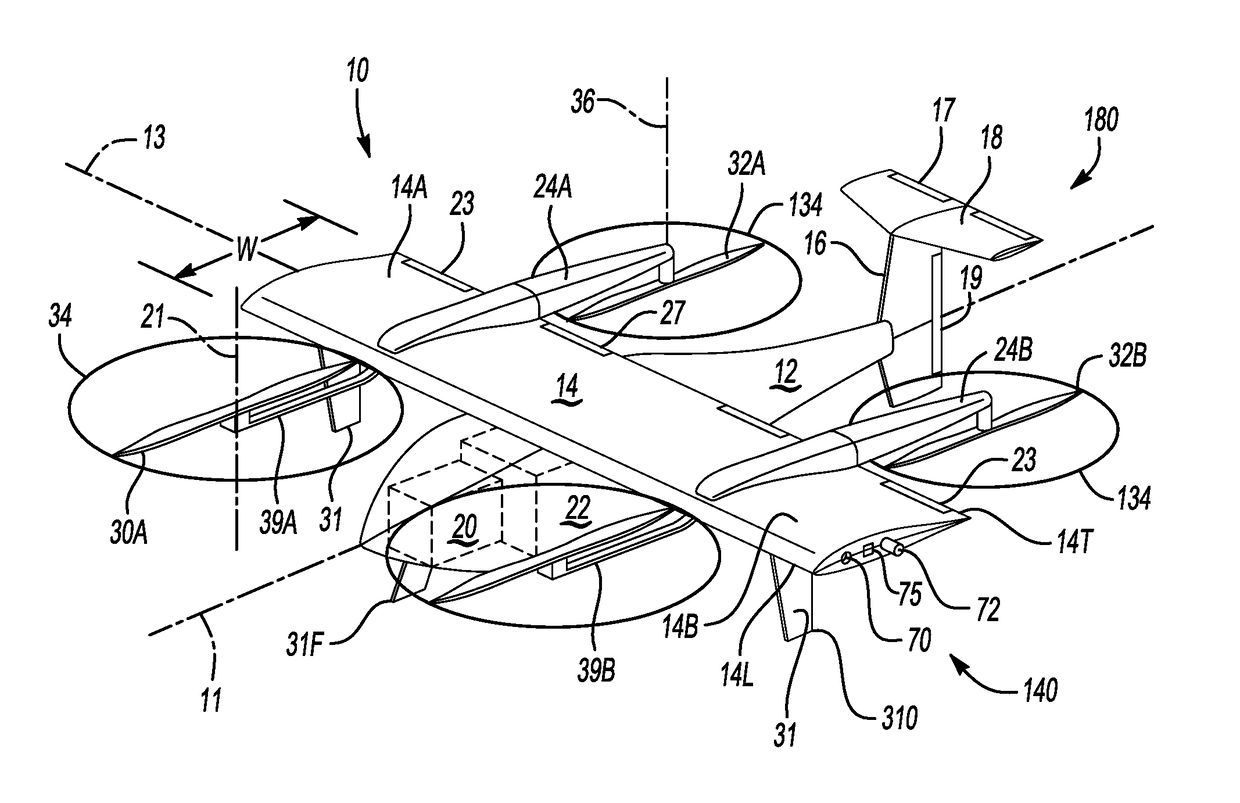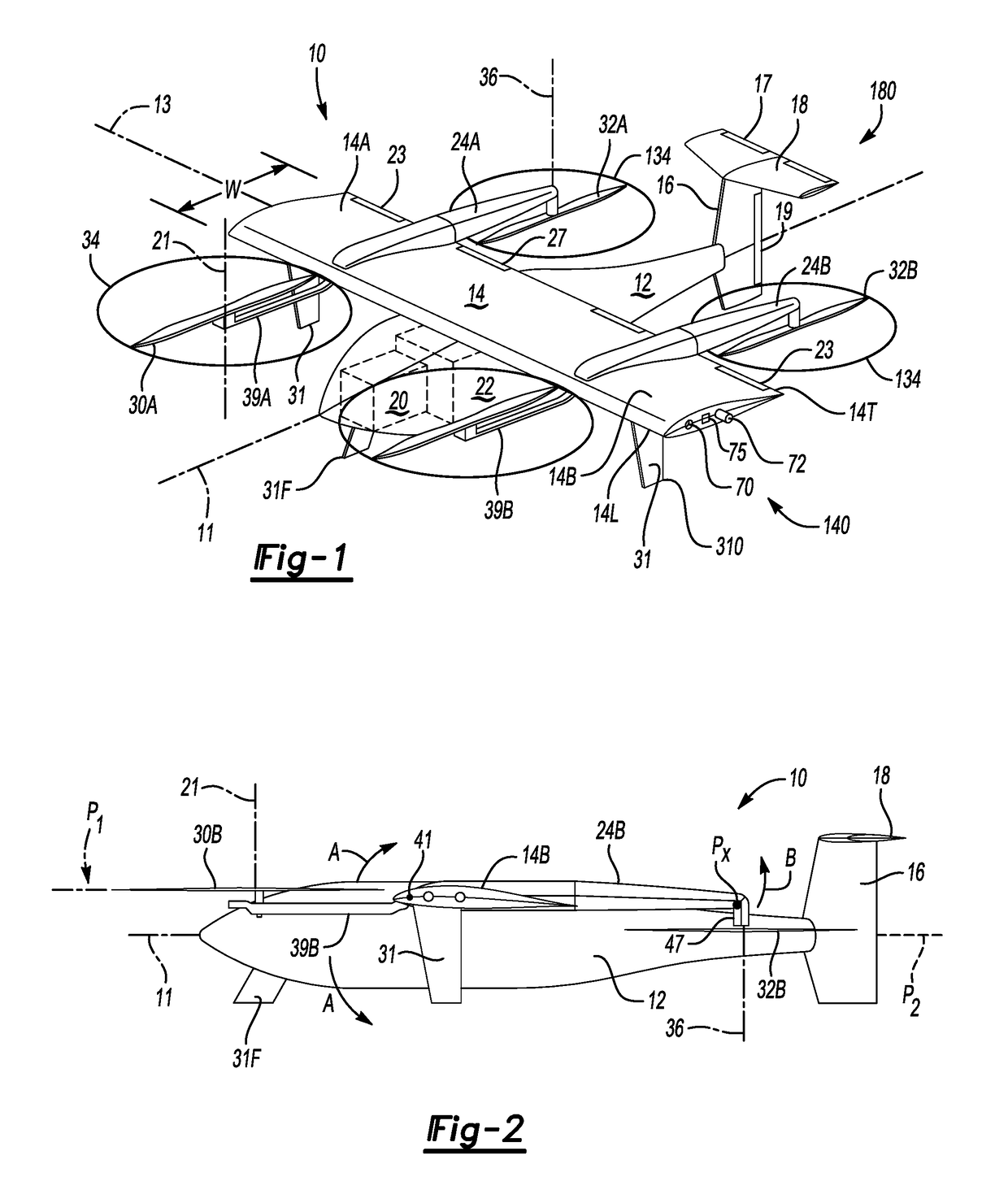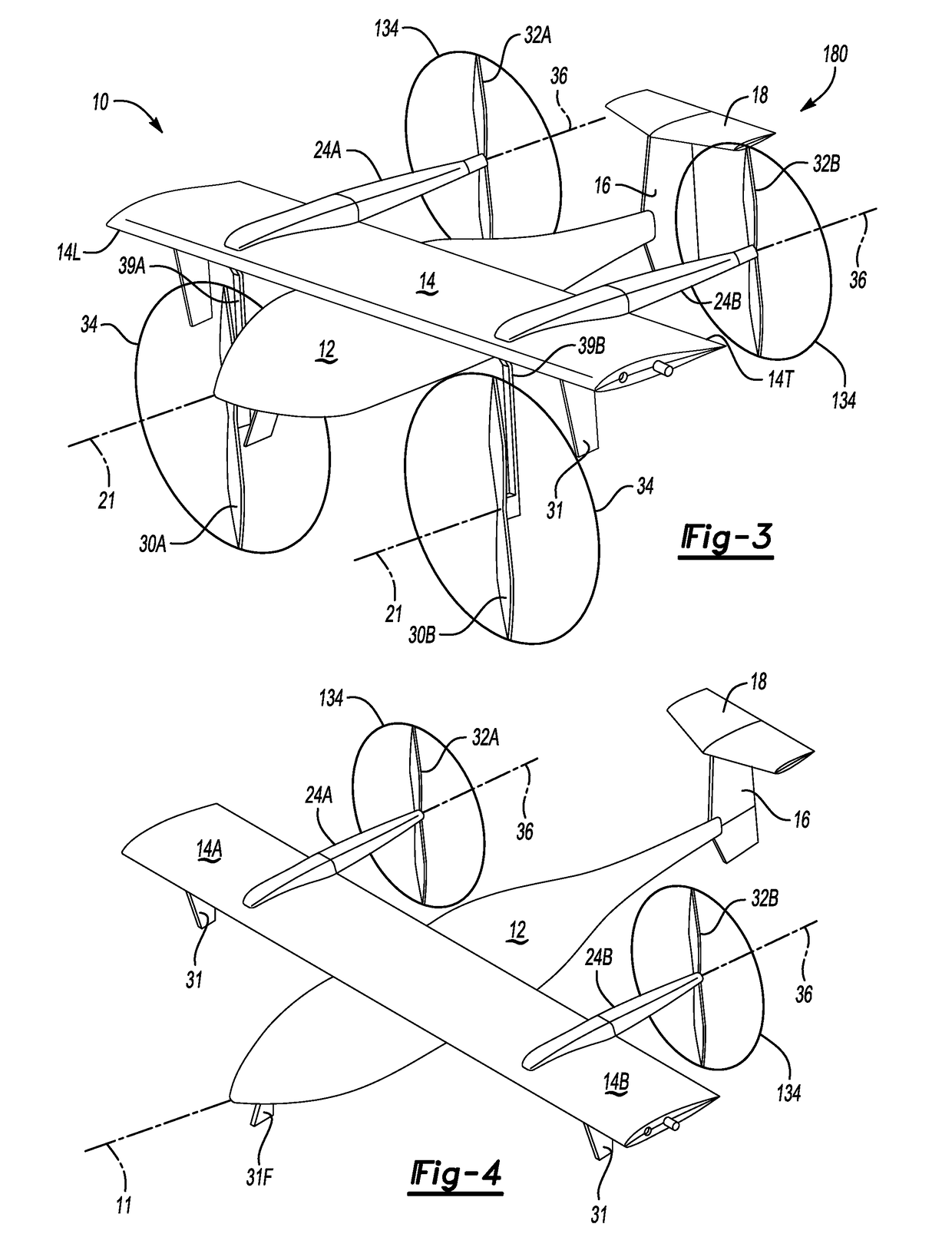Modular Unmanned Aerial System with Multi-Mode Propulsion
a technology of unmanned aerial systems and modules, applied in the direction of power plant fuel tanks, vertical landing/take-off aircraft, transportation and packaging, etc., can solve the problems of reduced payload carrying capacity, reduced flying range, and inefficient flight operations, etc., to achieve the effect of expanding the effective flight range of the uas
- Summary
- Abstract
- Description
- Claims
- Application Information
AI Technical Summary
Benefits of technology
Problems solved by technology
Method used
Image
Examples
Embodiment Construction
[0027]For purposes of description herein, the terms “upper,”“above”, “lower,”“right,”“left,”“rear,”“aft”, “front,”“fore”, “vertical,”“horizontal,” and derivatives thereof shall relate to the invention as oriented in FIG. 1. However, various alternative orientations and step sequences are possible, except where expressly specified to the contrary. The specific devices and processes illustrated in the drawings and described in the following specification are intended as exemplary embodiments of the structure or processes as defined in the appended claims. Hence, specific dimensions and other physical characteristics relating to the representative embodiments disclosed herein are not limiting, unless the claims expressly state otherwise.
[0028]With reference to the drawings, wherein like reference numbers refer to the same or similar components throughout the several views, an Unmanned Aerial Vehicle (UAV) module 10 is depicted schematically in FIG. 1 in a vertical takeoff and landing (...
PUM
 Login to View More
Login to View More Abstract
Description
Claims
Application Information
 Login to View More
Login to View More - R&D
- Intellectual Property
- Life Sciences
- Materials
- Tech Scout
- Unparalleled Data Quality
- Higher Quality Content
- 60% Fewer Hallucinations
Browse by: Latest US Patents, China's latest patents, Technical Efficacy Thesaurus, Application Domain, Technology Topic, Popular Technical Reports.
© 2025 PatSnap. All rights reserved.Legal|Privacy policy|Modern Slavery Act Transparency Statement|Sitemap|About US| Contact US: help@patsnap.com



